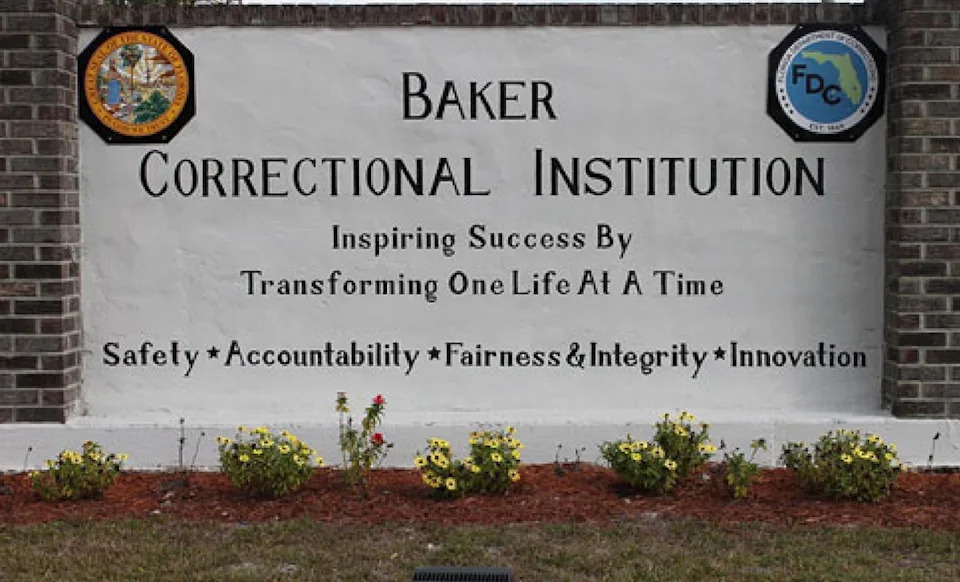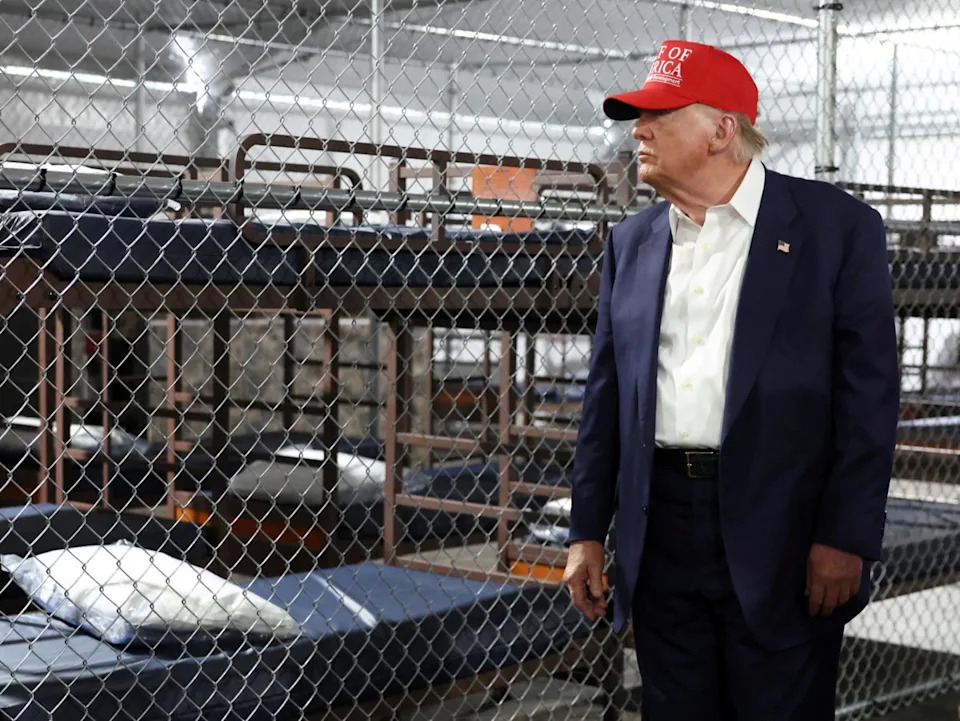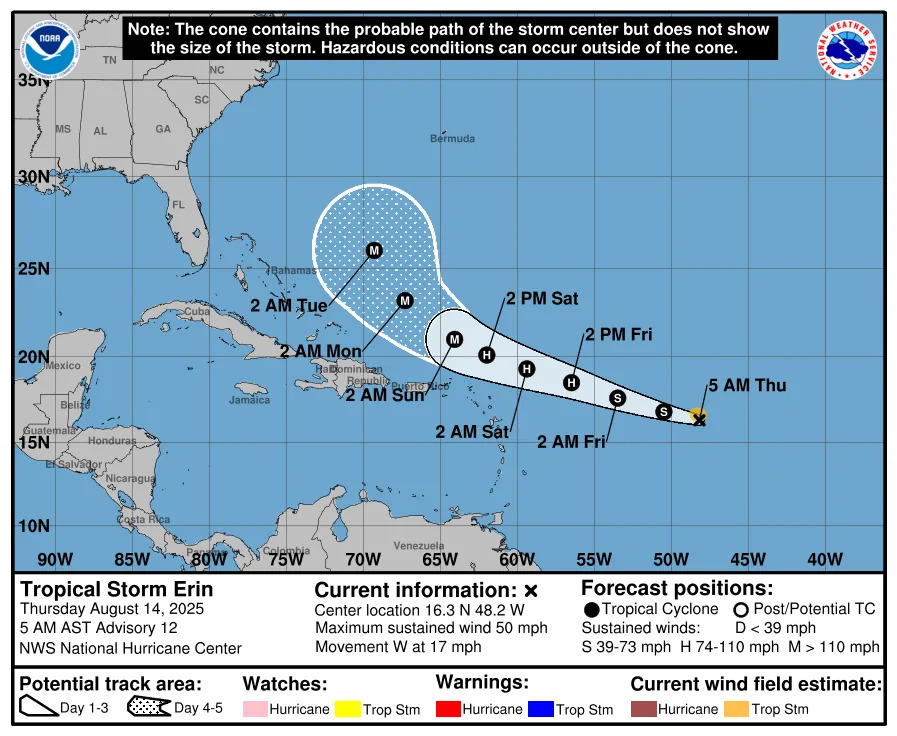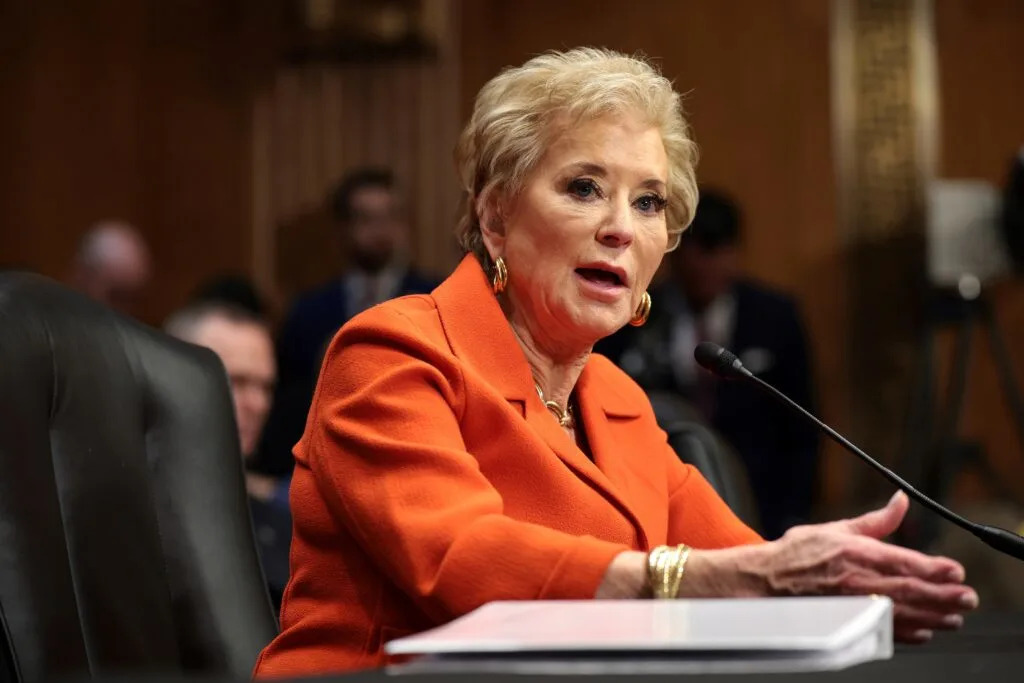Florida Governor Ron DeSantis is turning a shuttered state prison into another state-run immigration detention center that can hold up to 1,300 people.
While a federal judge considers whether to shut down a detention facility that Donald Trump’s administration and Florida officials are calling “Alligator Alcatraz” in the Everglades, DeSantis announced Thursday the state is moving forward with “Deportation Depot.”
“This will be operational soon, it is not going to take forever, but we are also not rushing to do this right this day,” DeSantis said Thursday.
The prison — located within a rural stretch of the state between Tallahassee and Jacksonville — will operate inside Baker Correctional Institution, joining a new wave of state-run detention centers working with Immigration and Customs Enforcement to boost the president’s mass deportation agenda.
“The reason for this is not to just house people indefinitely. We want to process, stage and then return illegal aliens to their home country. That is the name of the game,” DeSantis said.

The prison first opened in 1978 with a capacity for 1,165 inmates in a mix of security levels, including for inmates who were considered high security risks. It closed in 2021 follow staffing shortages at the state’s correctional facilities.
The governor’s announcement follows a federal court order to stop any new construction at Alligator Alcatraz following a lawsuit from environmental groups warning that the facility endangers surrounding wetlands and wildlife.
That 3,000-bed detention center opened in south Florida last month within the Dade-Collier Training and Transition Airport, roughly 43 miles from Miami in the middle of the Everglades.
A federal lawsuit accuses the facility of blocking detainees from legal counsel and forcing people into “overcrowded, unsanitary, and harsh conditions” with inadequate food, flood-prone cells, and “excessive use of force” from guards that sent at least one man to a hospital.

It’s also unclear who is actually running the facility and who wants to take responsibility for it. Government lawyers could not immediately answer in court whether the federal government or Florida is responsible.
In court filings, immigration officials claimed that the facility is operating through the federal 287(g) program, which allows local and state law enforcement agencies to enforce federal immigration law. ICE has inked nearly 800 such agreements covering 40 states.
That makeshift facility is expected to cost roughly $450 million within its first year, at roughly $245 per inmate bed per night, according to Homeland Security. ICE spent roughly $187 per adult detainee per day in 2023.

The incoming wave of state-run detention centers is expected to tap into $45 billion in new funding for ICE as part of Trump’s “big, beautiful bill.” That bill also allocates $30 billion for an aggressive recruitment campaign to hire another 10,000 ICE agents.
Altogether, the bill earmarks more than $170 billion for immigration enforcement — a boon to for-profit contractors and cash-strapped states looking to tap into billions of taxpayer dollars.
Earlier this month, Indiana officials and Homeland Security announced plans to expand Miami Correctional Center, a state prison 70 miles north of Indianapolis. Homeland Security Secretary Kristi Noem said that facility will have capacity to detain roughly 1,000 immigrants.
Officials are calling that detention center the “Speedway Slammer.”
The Trump administration is also reportedly in talks with Louisiana officials to detain immigrants inside the notorious Angola prison, the largest maximum security prison in the country, built on a former plantation owned by a slaveholder.
The prison — which holds roughly 4,300 people, most of which were convicted of violent crimes — could detain 450 immigrants as early as next month, according to The Wall Street Journal.







Comments